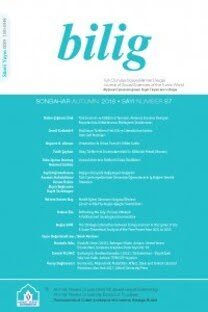Türk dillerinde cümle tamlamaları; öge cümlelerin sözdizimsel ve anlamsal davranışları, bunları işaretleyen bağlayıcılar ve bunların seçiminde çeşitli yüklem tiplerinin rolü bu çalışmanın konusunu oluşturmaktadır. Bağımlı yan cümlelerin iki ana tipi, öge cümlelerde bağlayıcı olarak işlev görür. Bunlar, her ikisi de İngilizce that yan cümleleriyle eşdeğer olan sıfatfiilli ve isimfiilli öge cümle tiplerdir. Geleneksel olarak, öge cümlelerin anlamsal davranışının olgusal olan ve olgusal olmayan fiiller arasındaki bir ayrıma bağlı olduğu düşünülmüştür. İsimfiil bağlayıcılarıyla kurulmuş olgusal olmayan öge cümlelere karşılık sıfatfiil bağlayıcılarıyla oluşturulan öge cümleler, olgusal olarak tanımlanmıştır. Csató (2010), olgusal olan ve olgusal olmayan ayrımının Türkçedeki dağılımı açıklamak i çin yetersizliğini göstermiş ve işlevsel gramerlerde içe yerleşik önermelerle içe yerlişik yüklemler arasındaki farkın Türkçe sıfatfiil ve isimfiil bağlayıcılı cümleler arasındaki farklarda hesaba katılabileceği sonucuna ulaşmıştır. Sadece sıfatfiil bağlayıcılı cümleler eyleyici güce ve gerçek bir değere sahip olabilir. Bu makalede, bu durumun karşıtlık değerliliğinin özel bir dağılımı sonucu ortaya çıktığı varsayılmaktadır. Sıfatffil bağlayıcılarına sahip olan cümleler, doğrudan bir olaya değil olay hakkında bazı bilgilere işaret eder. "Muhtemel olgu bilgisi" anlayışı Türk dillerinin çoğunda dilbilgiselleşmiştir. Sıfatfiil bağlayıcılarıyla kurulan cümleler bu anlayışa işaret ederken isimfiil bağlayıcılarıyla kurulanlar bu konuda bilgi vermez. Bunlar, bir dizi karşıtlığın işaretsiz ögesi, ileri derecede muğlak, üst cümle durumundaki yükleme bağlı olarak değişen (örn. kiplik) yorumlara açıktır. Yüklemlerin geleneksel sınıflandırılması bağlayıcı seçimi sorununu çözememiştir. Sıfatfiil bağlayıcısının anlamsal değeri bağlayıcı seçimi konusunda belirleyicidir. Normal olarak bir isimfiil bağlayıcısı ile ortaya çıkan yüklemler, eğer "muhtemel olgu bilgisi" kesin ise bir sıfatfiil bağlayıcısı ile de kurulabilir. Sıfatfiil bağlayıcıları üst yüklem ve bağımlı yüklemin anlamsal olarak işaret ettiği kavramla zorunlu uyumluluğu konusunda önemli ve seçici bir rol oynamaktadır.
The topic of the paper is Turkic clausal complementation: thesyntactic and semantic behavior of complement clauses, thesubjunctors that mark them, and the roles of various predicatetypes in selecting them. Two main types of bound complementizers serve as subjunctors in complement clauses: a participial and an infinitival type, both usually corresponding tothe English complimentizer that.Traditionally, the semantic behavior of the complementclauses has been thought to depend on a distinction betweenfactive and non-factive verbs. Complement clauses providedwith participial subjunctors have been described as factive incontrast to non-factive complement clauses provided with infinitival subjunctors.Csató (2010) shows that the distinction fact vs. non-fact doesnot explain the distribution in Turkish. She concludes thatthe distinction made in Functional Grammar between embedded propositions and embedded predications can be applied to account for the differences between Turkish clauseswith participial and infinitival subjunctors. Only clauses witha participial subjunctor can have illocutionary force and atruth value.It is suggested in the present paper that this situation followsfrom a specific distribution of oppositional values. Clausescarrying participial subjunctors do not refer directly to eventsas such, but explicitly to some knowledge about events. Theconcept 'knowledge of a possible fact' is grammaticalized inmost Turkic languages. Clauses provided with participial subjunctors signal this concept. Those provided with inifinitivalsubjunctors do not share it. They are the non-marked members of several oppositions, thus highly ambiguous, open todiverse (e.g. modal) interpretations suggested by the predicateof the higher clause.Traditional classifications of predicates do not solve the problemsof subjunctor selection. The semantic value of the participial subjunctor is decisive. Predicates that normally occur with an infinitival subjunctor can also occur with a participial subjunctor if thesemantic value 'knowledge of a possible fact' is intended. Theparticipial subjunctor plays a prominent selecting role: both thehigher and the lower predicate must be semantically compatiblewith the concept it signals
___
Bazin, Louis (1968). Introduction à l'étude pratique de la langue turque. Paris: Maisonneuve.
Csató, Éva Á (1990). "Non-finite verbal constructions in Turkish". In Bernt Brendemoen (ed.) Altaica Osloensia. Oslo: Universitetsforlaget. 75-88.
Csató, Éva Á (1999). "Modalität in türkischen Komplementsätzen und ihre Entsprechungen im Deutschen". Lars Johanson & Jochen Rehbein (eds.) Türkisch und Deutsch im Vergleich (Turcologica 39). Wiesbaden: Harrassowitz. 23-32.
Csató, Éva Á (2010). "Two types of complement clauses in Turkish". Hendrik Boe- schoten & Julian Rentzsch (eds.) Turcology in Mainz/Turkologie in Mainz (Turcologica 82). Wiesbaden: Harrassowitz. 107-122.
Dik, Simon C. (1989). The theory of Functional Grammar 1. The structure of the clause. Dordrecht: Foris.
Dik, Simon C. (1997). The theory of Functional Grammar 2. Complex and derived con- structions. [Edited by Kees Hengeveld.] Berlin: Mouton de Gruyter.
Erdal, Marcel (1998). "On the verbal noun in -(y)Iş". Kâmile İmer & Leyla Uzun Subaşı (eds.) Doğan Aksan armağanı. Ankara: Ankara Üniversitesi Dil ve Tarih-Coğrafya Fakültesi. 53-68.
Erguvanlı-Taylan, Eser (1998). "What determines the choice of nominalizer in Turkish nominalied complement clauses?". Bernard Caron (ed.) Proceed- ings of the 16th International Congress of Linguistics, paper no. 220 (CD Rom). Oxford: Pergamon.
Foley, William A. & Robert D. Van Valin, Jr. (1984). Functional syntax and universal grammar. Cambridge: Cambridge University Press.
Johanson, Lars (1975). "Some remarks on Turkic 'hypotaxis'". Ural-Altaische Jahrbücher 47. 104-118.
Kiparsky, Paul & Kiparsky, Carol (1970). "Fact". Manfred Bierwisch & Karl Erich Heidolf (eds.) Progress in linguistics. A collection of papers (Janua Lin- guarum, series minor 43). The Hague & Paris: Mouton. 143-173.
Lees, Robert B. (1965). "Turkish nominalizations and a problem of ellipsis". Foundations of Language 1. 112-121.
Lyons, John (1977). Semantics. Cambridge: Cambridge University Press.
Noonan, Michael (1985). "Complementation". Timothy Shopen (ed.) Language typology and syntactic description. Cambridge: Cambridge University Press. 50-150.
Palmer, Frank R. (1986). Mood and modality. Cambridge: Cambridge University Press.
Van Schaaik, Gerjan (2001). "The order of nominalizations in Turkish". Gerjan van Schaaik (ed.) The Bosphorus papers. Studies in Turkish grammar 1996- 1999. İstanbul: Boğaziçi University Press. 114-143.
Vendler, Zeno (1967). Linguistics in philosophy. Ithaca, NY: Cornell University Press.
Vendler, Zeno (1972). "On saying something". Zeno Vendler (ed.) Res cogitans, an essay in relational psychology. Ithaca, NY: Cornell University Press.
